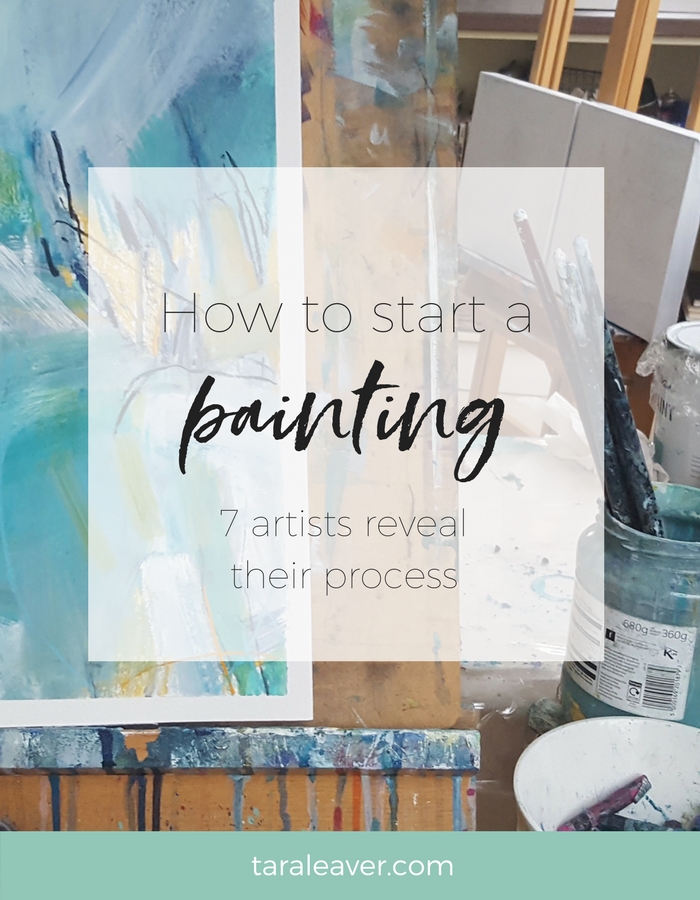
I know that blank canvas syndrome snags a lot of us – I wrote about it here and, indirectly, here. If you need living proof that it can be removed as an obstacle for good, let me offer up myself. 🙂 It’s not something I tend to experience any more. This is not to gloat, but to show that if you are frequently daunted, or even stymied, before you’ve even laid down your first mark, it’s a Real Actual Truth that it doesn’t always have to be this way!
To back me up on this, and help you out by offering ideas, I asked a few of my artist friends how they start a painting. My intention is to show that the approaches are as diverse as we are, as well as to give you possible ideas to play around with {and maybe introduce you to some very cool artists :)}. So without further ado, here are seven ways to start a painting!
Connie Solera
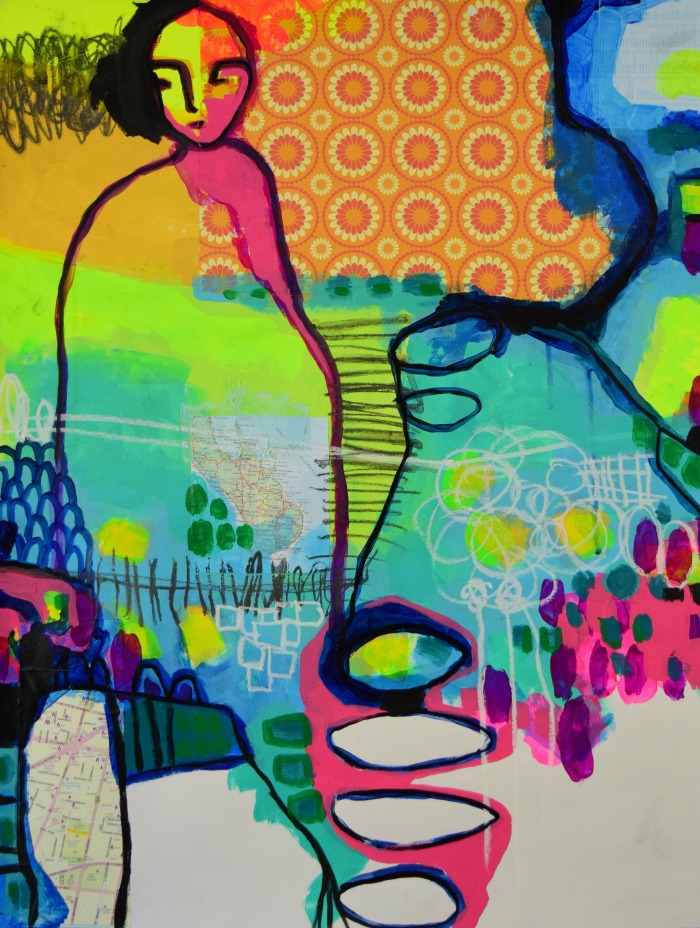
Sometimes that means using my Art Graf stick to create lines that swirl, gallop, dance, and saunter across the page until an image emerges that makes my heart say “yes, let’s go there”.
Other times, starting a painting becomes a shameless seduction as I softly lay one color field down next to another. Truth be told this is my favorite way to begin a painting . I love the sense of danger that stirs when colors blend without boundaries. It’s the tension between their edges and the camaraderie in their overlap that helps form the body of the painting.
Though no matter which of these ways I intuitively choose to start my painting, both of these approaches lead me to the same destination. They each nudge my mind, heart, and hand back into alignment. They each tell my spirit that it’s time to paint.”
Find Connie at Dirty Footprints Studio
Gretchen Warsen
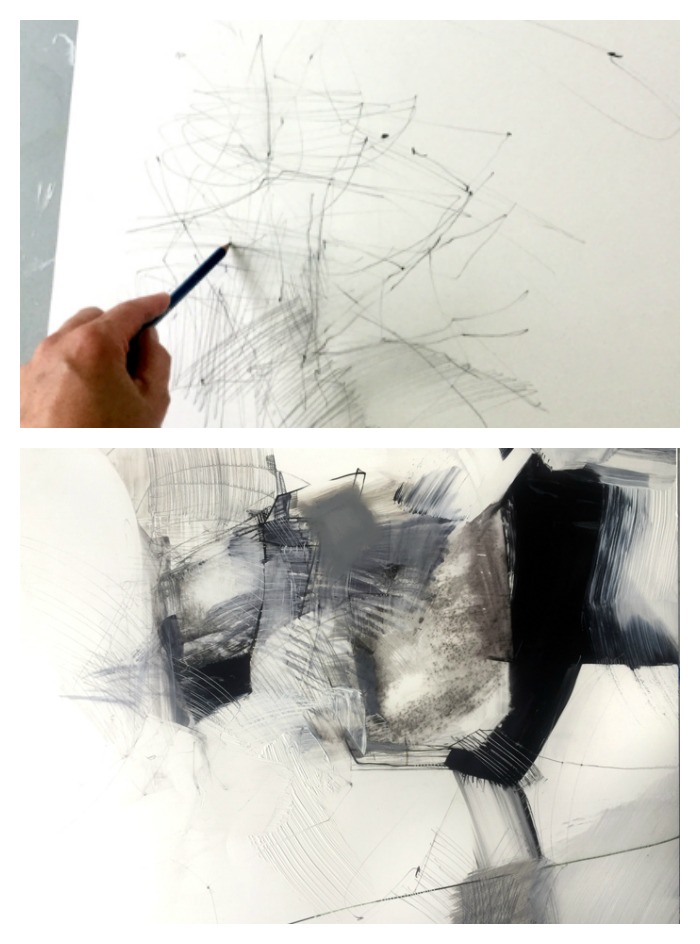
Because I am primarily an abstract painter and I tend to work responsively (I move forward and make decisions based on what’s already on the page), I start by making marks and lines in pencil using my left hand (even though I’m right-handed) because it seems to free up that right-brain spatial awareness and it takes care of the ominous white emptiness.
I’m in love with lines and I especially like smearing them, putting layers of transparent and opaque paint over them, and letting them map out how the rest of the piece will unwind. I often change my mind several times about the page orientation but the focus area usually stays the same.”
Find Gretchen at Toddy Pond Designs
Rachel Cronin
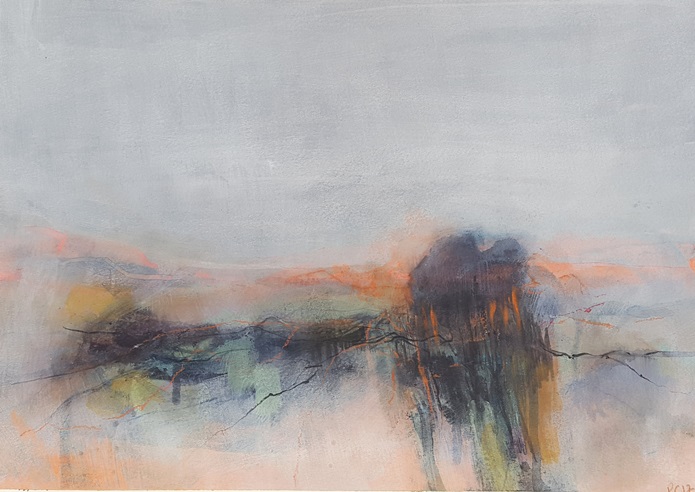
Stop when you are going good and you know what will happen next.
Ernest Hemmingway
“That I find every blank canvas and sketchbook terrifying is why I choose to work with so many. If I’m going to battle one sheet of paper why not ten? I tackle paintings in bulk and I begin new work at the end of a session.
I give myself thirty minutes to clean my palette. And by ‘clean’ I mean using every colour left to make backgrounds on as many sheets of paper as possible. That accidental muddy blend that we all end up with? Slap it on. Black ink? That too. I frequently have blobs of fluorescent paint left so they get used up as well. I try to make sure my bright clean colours stay that way and that my muddy colours become dark neutrals to add contrast in colour and tone. I add water to move things around and use a water-soluble pencil or some charcoal to add vague landscape features.
I don’t worry about details, this will come later. I’ve finished my painting session whilst the going was good and, the next day, I usually know what to do next.”
Find Rachel on Instagram
Kasey Moran
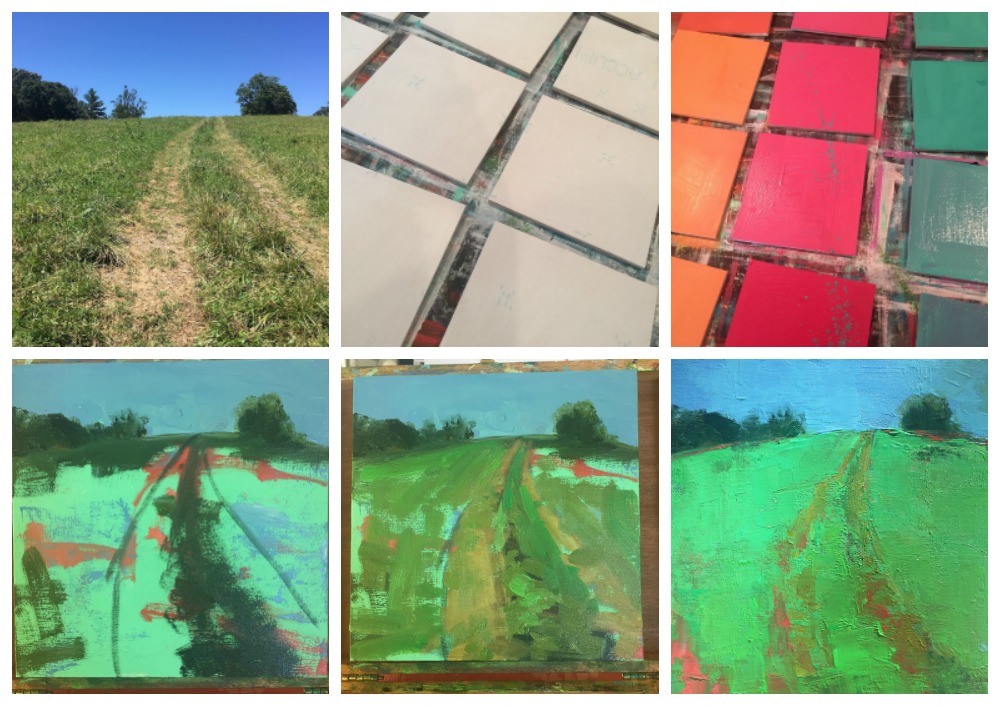
At the moment I work en plain air on 6×6 inch birch panels; I prefer them because they are smooth. I prep about 15 – 20 at a time by sanding them slightly and then using a white gesso for priming. After the gesso dries, I add a base color, which can be whatever inspires me at the moment. I typically lean toward bright colors. As soon as the base is dry they are ready to go.
I take two of my favorite brushes, one small and medium flat, and a palette knife. I like to have a view finder as well as it can help my focus with mapping out shapes. I look for areas that are interesting in composition. I map it out with my small brush, then start blocking in, sometimes with my larger flat and sometimes with my palette knife.
Going outside isn’t always going to happen especially due to weather, so I take my phone everywhere to snap pictures. It’s a nice reference for me to work from later.”
Find Kasey on Facebook
Eibhilin Crossan
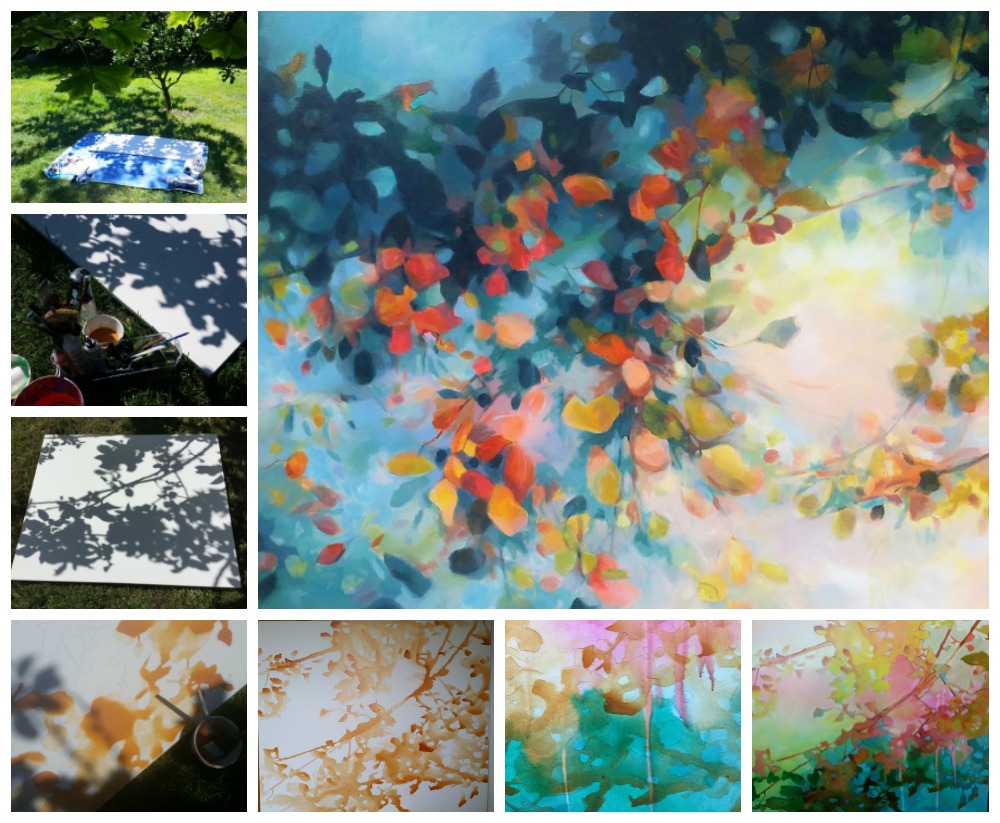
I am obsessed with light and shadow, and how light ‘leaks’ through the leaves. The Japanese have a term for this – Komorebi. This has become a series of works I call the Canopy Series.
I sit in my garden on a sunny day, under our beautiful apple tree. I love to be still, in contemplation, watching the leaves move in the breeze, listening to the sounds of nature. I lay the canvas down so the leaves cast their shadows across the surface and I look for an interesting composition.
Sometimes I use a canvas that I have painted with a neutral grey. I use a dark tone in fluid acrylic paint to trace the shadows, although they are constantly changing and flickering in and out as the sun moves across the sky and behind the clouds. I sometimes move the canvas to paint a new layer of shadows over the first layer, this helps to add depth.
Later I move back to the studio for the next layers which involve washes of colour and blocking in of darks and lights. The process from there is totally intuitive, it’s my personal exploration into an internal garden!”
Find Eibhilin on Instagram
Kellee Wynne
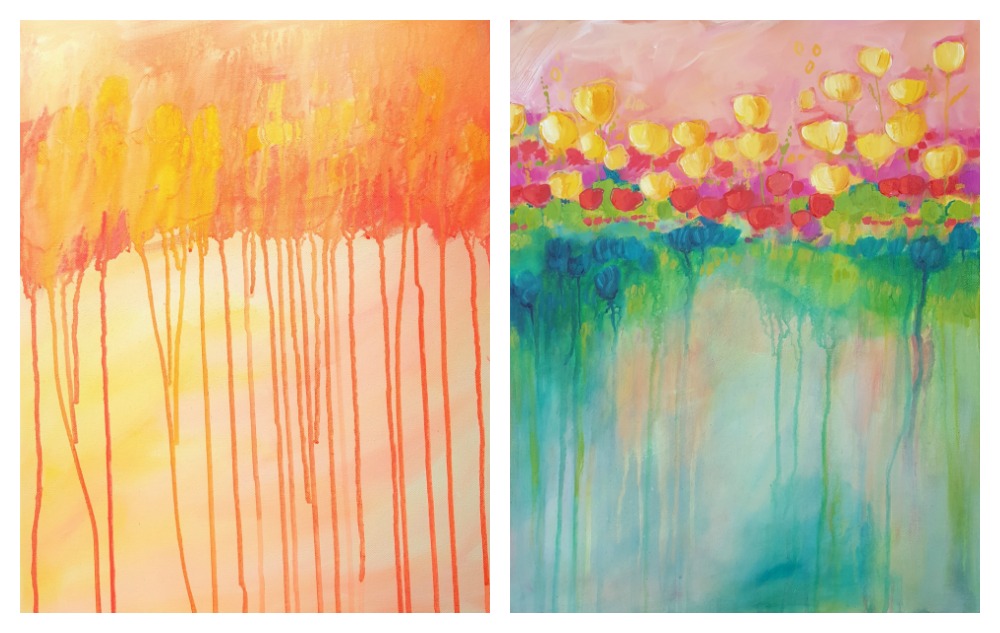
Often times it’s a warm color, yellow, orange or pink, to give the artwork a glow peeking from behind the layers to come. After the white is gone, I go for a splash of color. I quickly brush out gestural marks in Golden fluid acrylic paint and then pick up my spray bottle of water and watch the paint drip.
No matter how I imagine the finished painting should look, this fun and spontaneous method to begin a painting leaves me curious as to where it will end up. The drips and flow of paint lead me to follow my intuition to the end and it’s different every time.”
Find Kellee at Kellee Wynne Studios
Niki Cotton
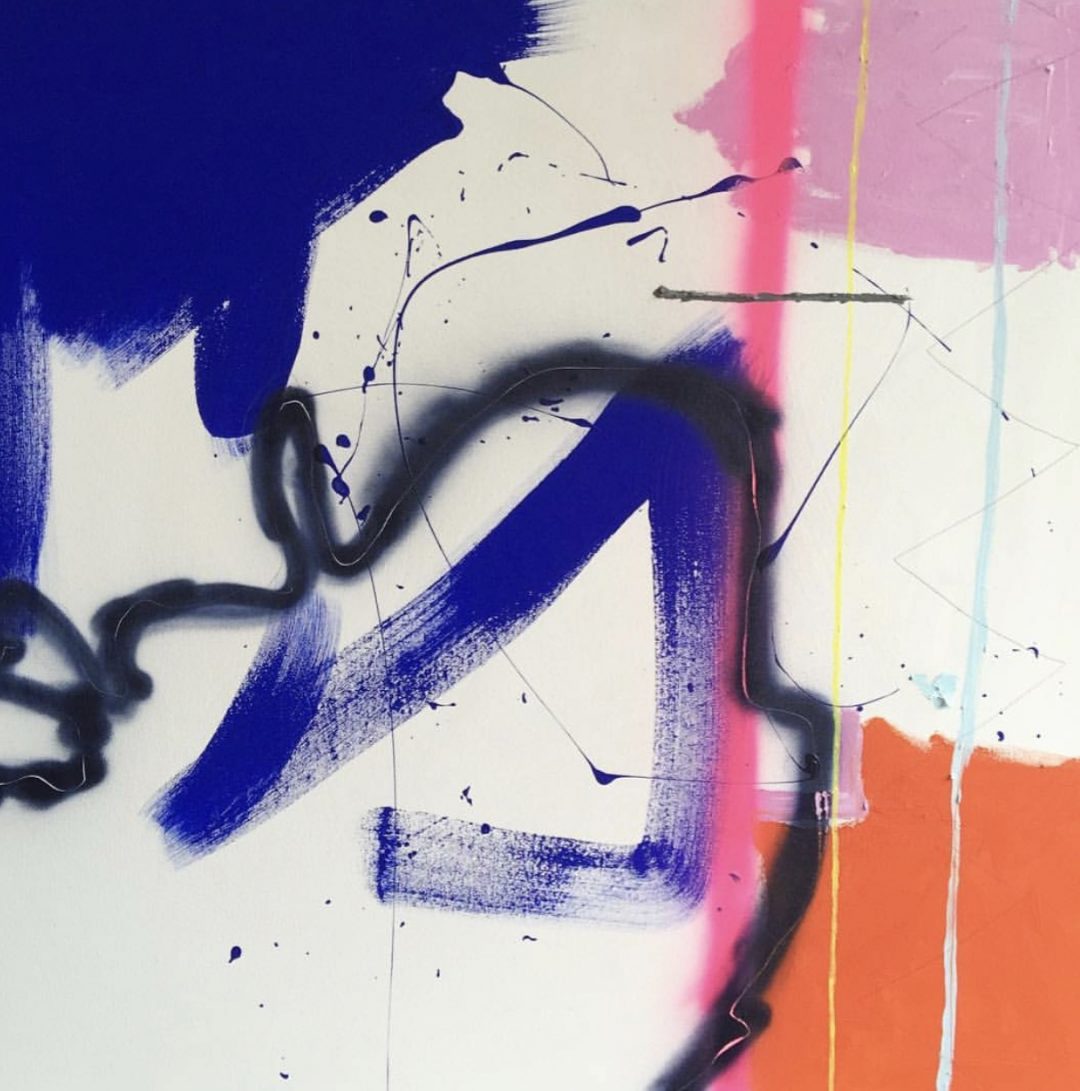
I then (& this is going to sound hocus pocus) breathe in the energy & stand still for a moment. Clearing my mind & wait to see which colour I feel in that moment. I then just grab it, squish it on the palette & start using it on either a canvas or paper, moving between them all. Getting a feel for what I’m doing.
I keep building in a random way until the bones are in place. That’s when my brain engages. Where I start making decisions in a focused way what to add, what to take away. What shape will fit & how much more to push. It’s a process that’s at odds with the one where I wake in the middle of the night with a fully fledged image in my head that I then use as a start. Capturing the essence & then pushing it to somewhere that often is nothing like the image I saw in my minds eye.”
Find Niki on Instagram
~
So many ways in to a painting! I hope this inspires you with some new ideas to try, and motivates you to give them a go!
How do you start a painting usually? Are there any ideas here you’d like to try? Tell us in the comments!
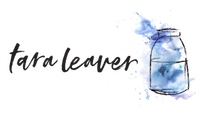
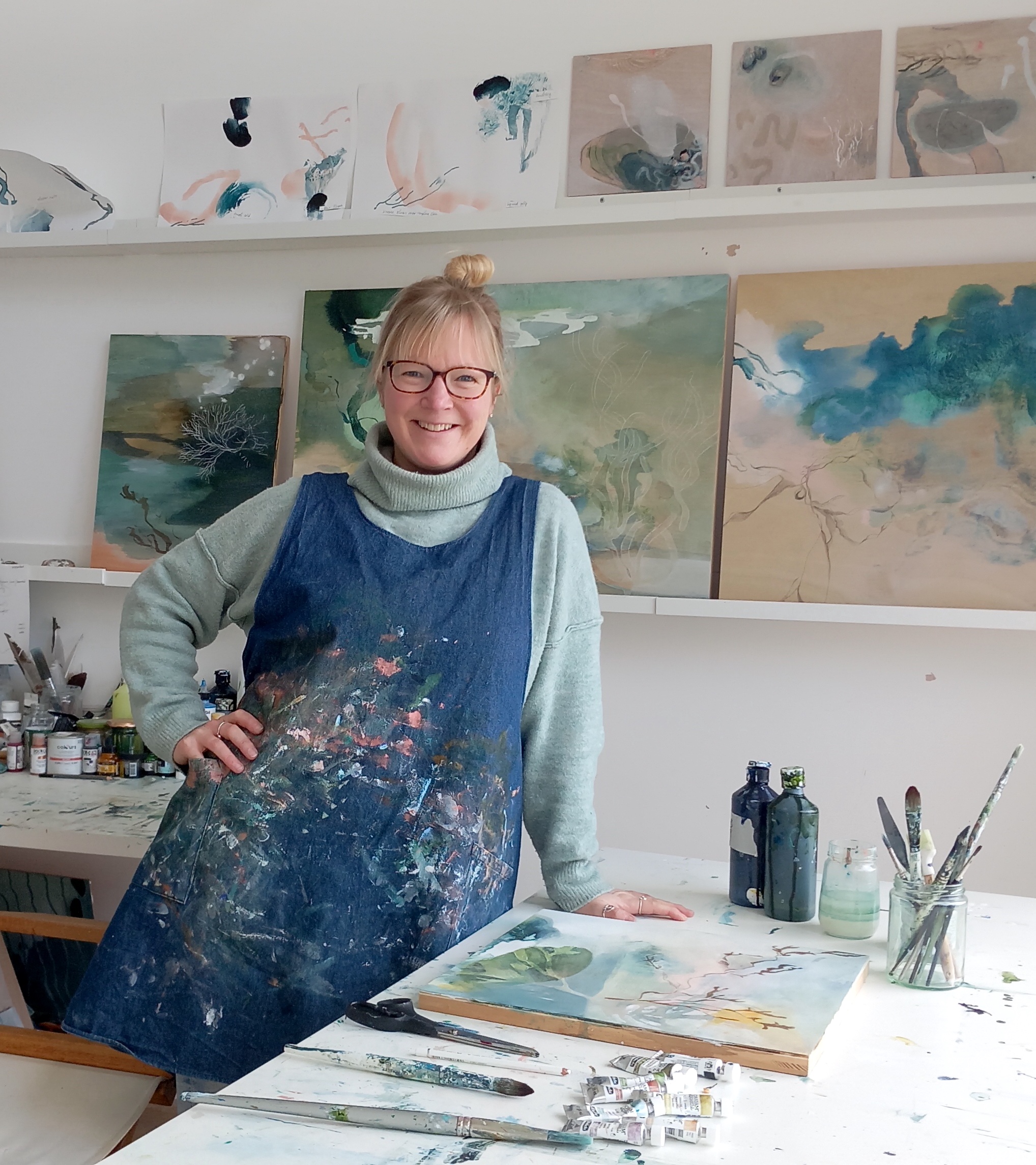
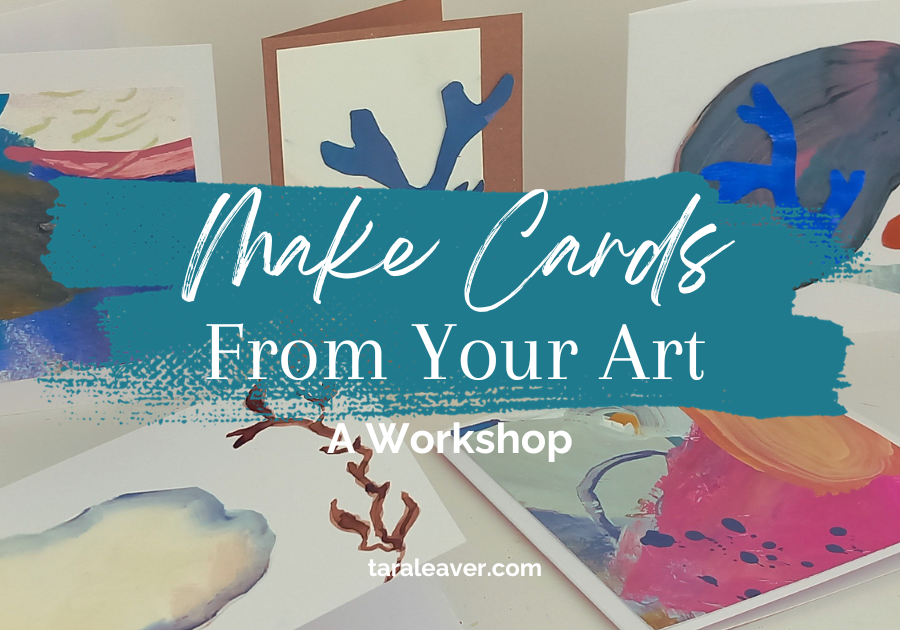
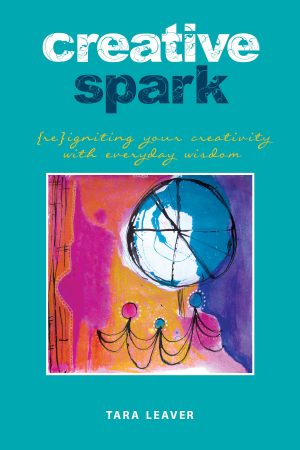
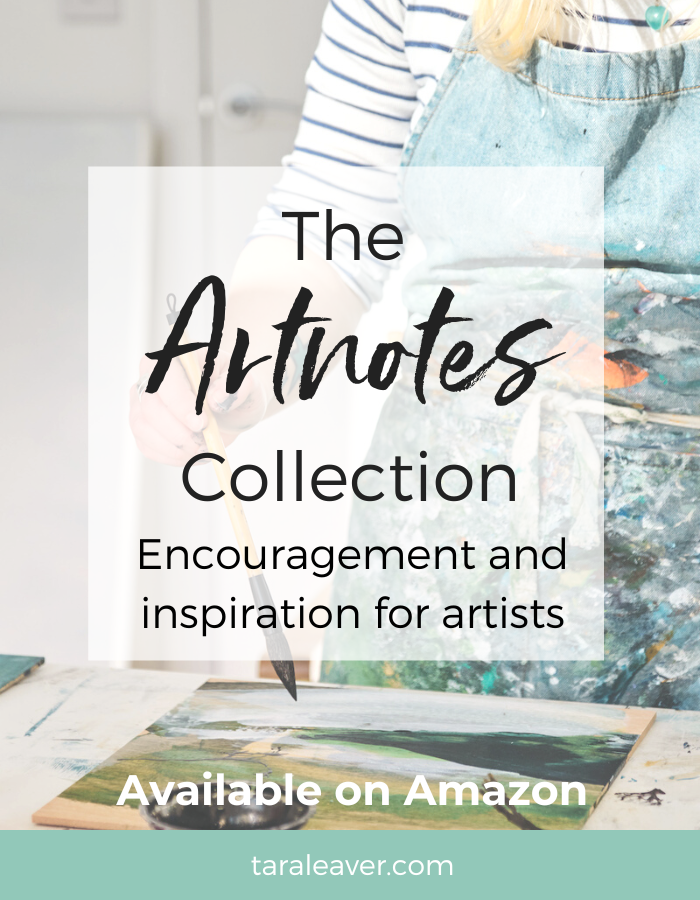
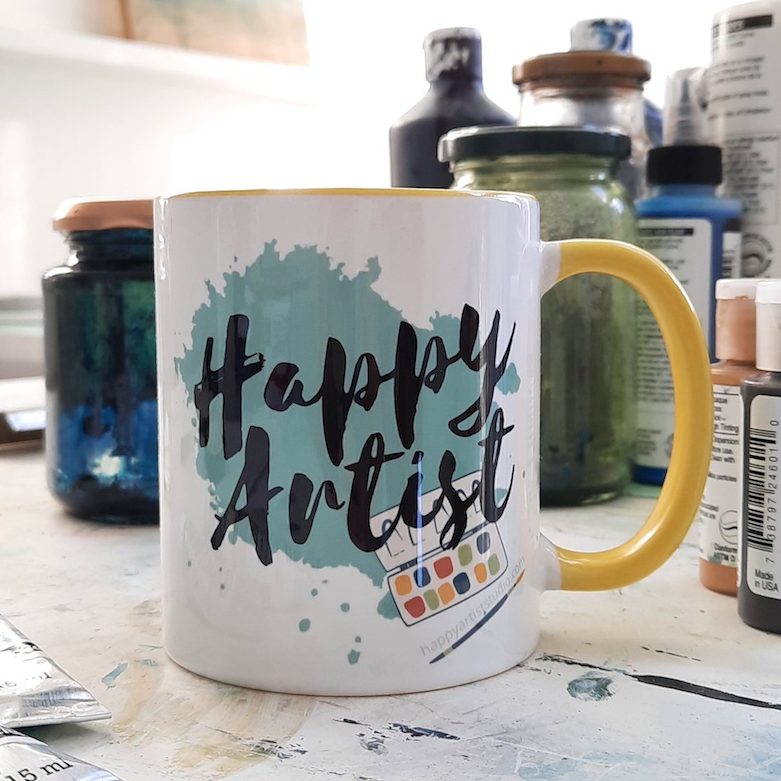

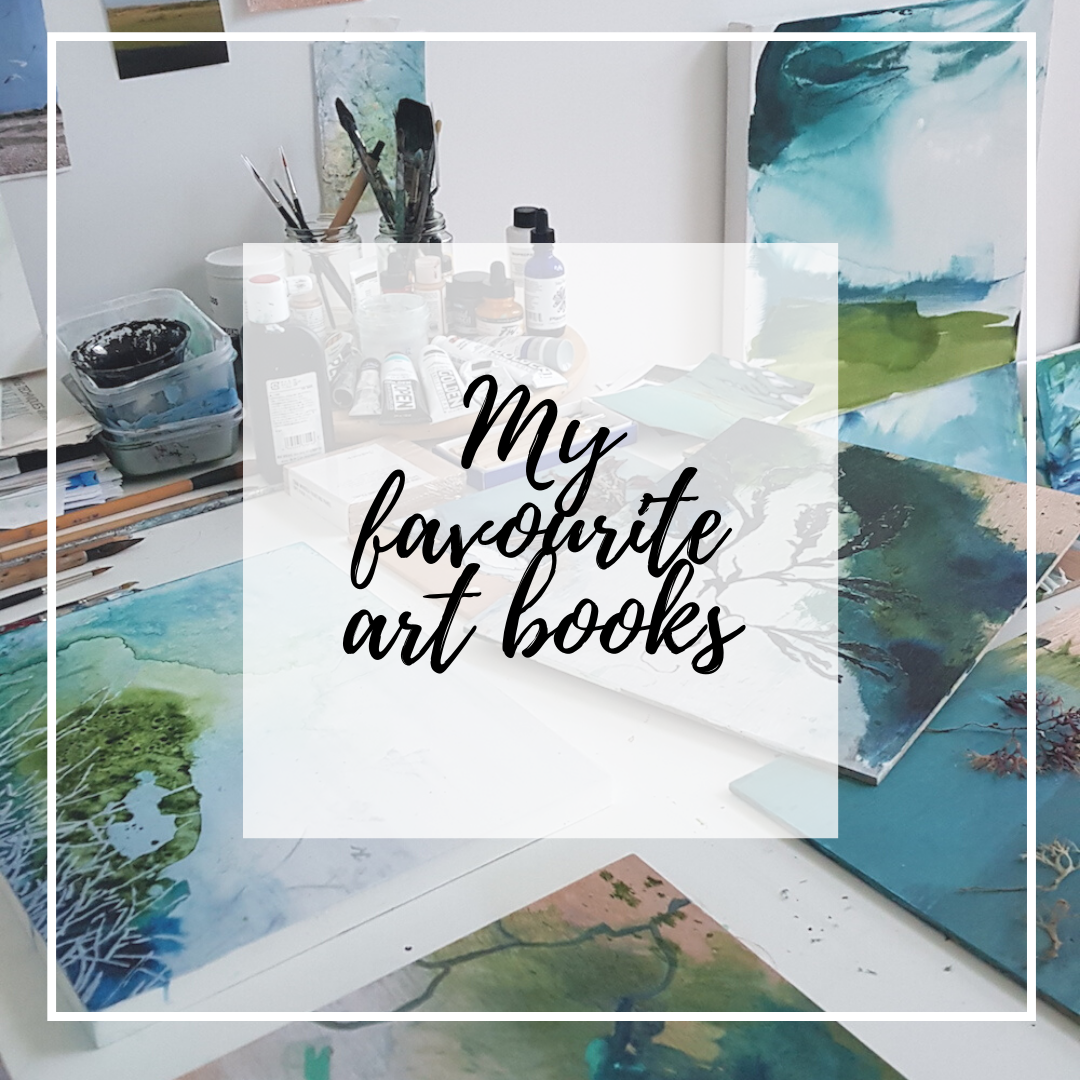
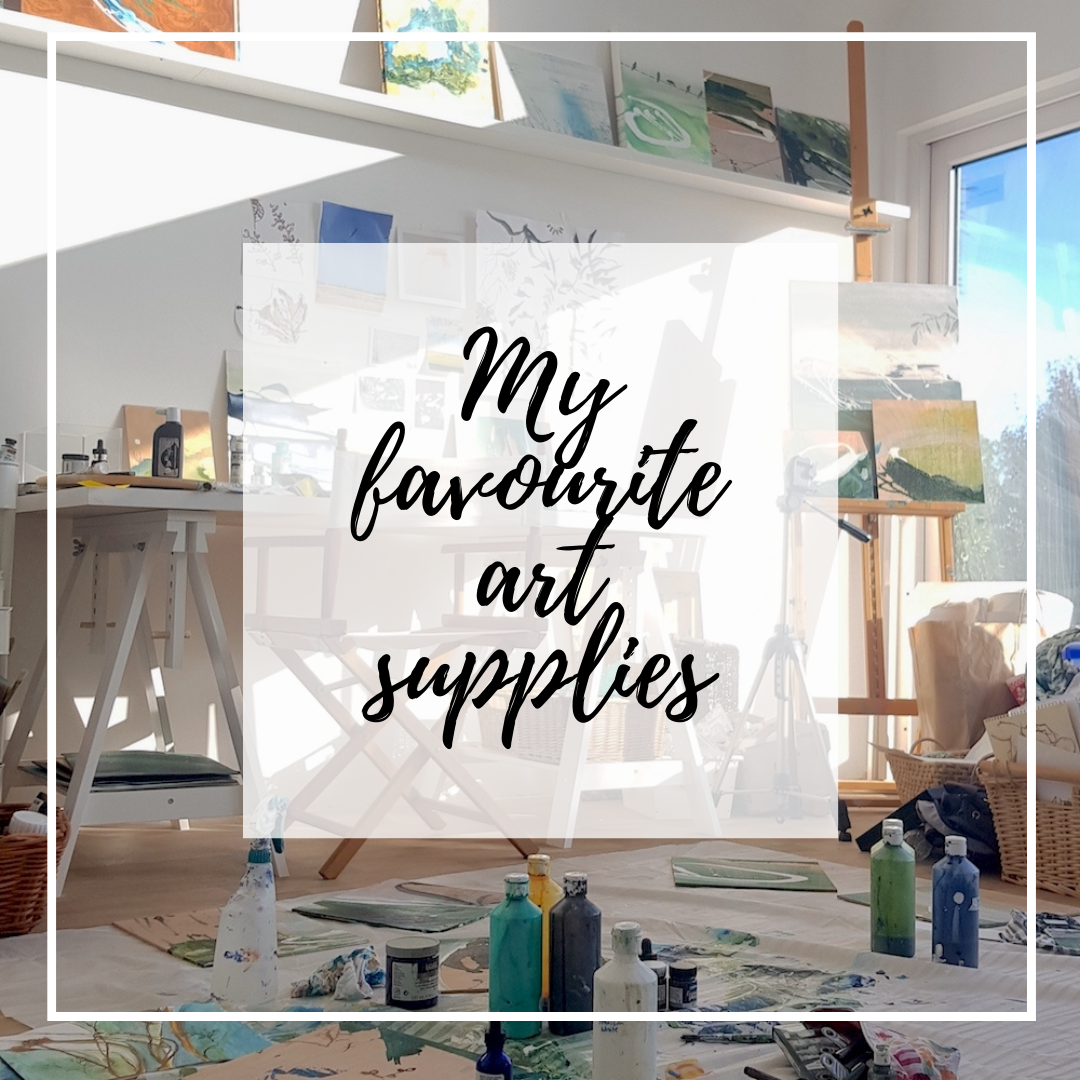
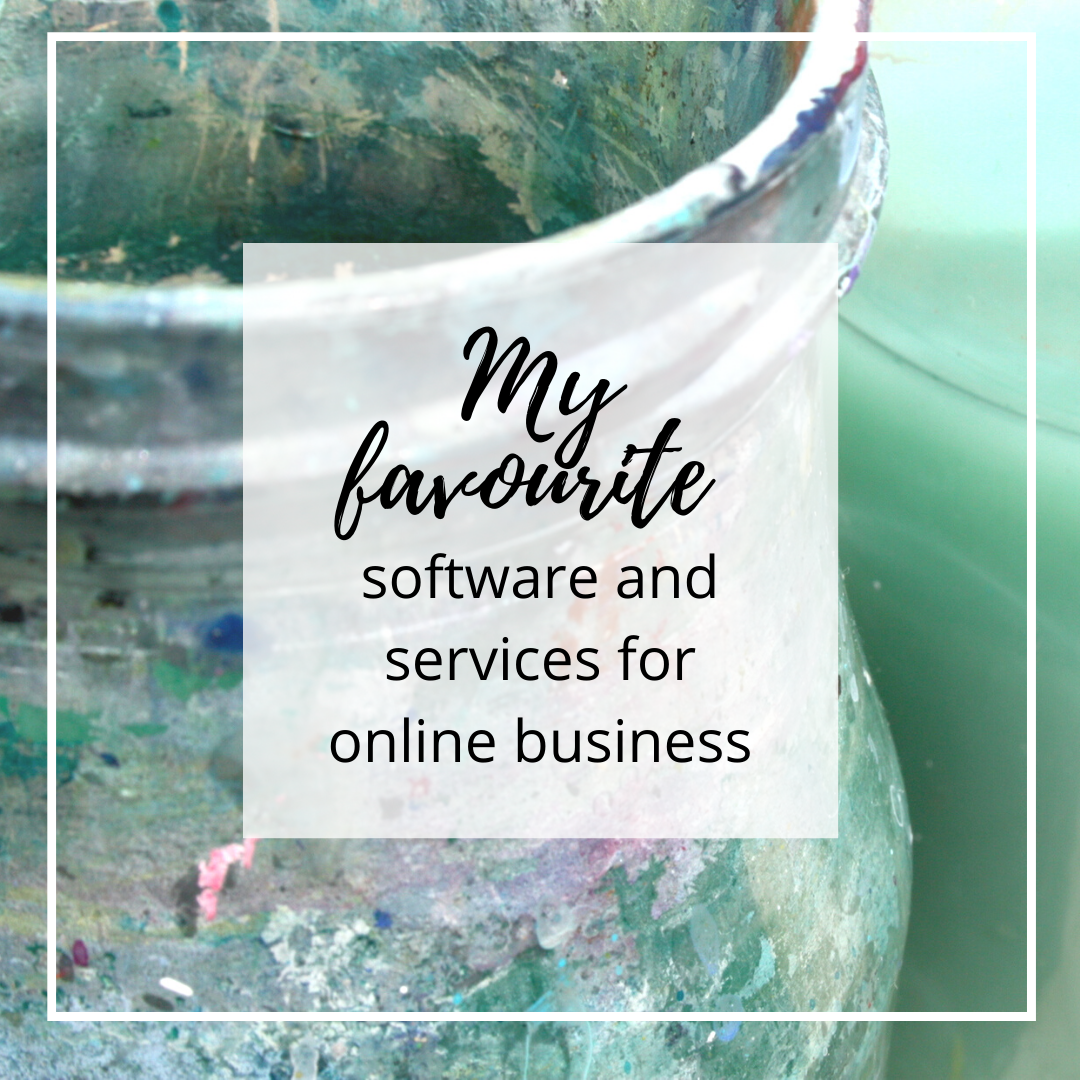
Love this Tara xxx Reading the various artist contributions and seeing their art stirred up my creative energy, definitely going to give some of them a go, so thank you to you and them! ????
Excellent news Melanie! Glad it was motivating! That’s what I always hope for. 🙂
Wow, what a creative group of painters! So many ideas to use to get started. Thanks for creating this post Tara!
Fantastic post Tara – I often procrastinate when it comes to starting a painting. I now have some new ideas on how to tackle that blank canvas thanks to your post and to the talented artists who revealed their methods. Irene (McCabe Creative)
So glad you found inspiration here Irene! Sometimes it really helps to have some back up ideas for those dry days. 🙂
Very inspiring post! Love it!
Love this new adventure in knowledge and help – thank you : ) Have submitted my name & e-mail and waiting for confirmation : )
Blessings, Sandra : )
You’re welcome Sandra!
Thank you Tara, for sharing, the blank canvas is always a bit overwhelming…sometimes it’s easier to to think, and just go with intuition, love all the inspiration!????
All the best, Dawn
Excellent mini lesson! Thank you. I have just started exploring painting after studying drawing and sketching so this is so helpful.
So glad it’s helpful to you Antoinette! I always find it so fascinating seeing into other artists’ processes – so much to be learned from observing!
J’aime cette manière de peindre, d’en parler et commenter l’accès à la finalité d’une idée! je débute et exploiterai avec plaisir tous vos conseils, merci
You’re very welcome Marie-Claude! Thank you for visiting!